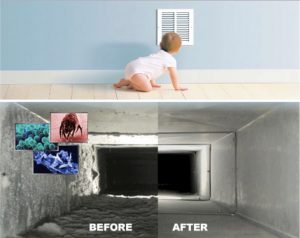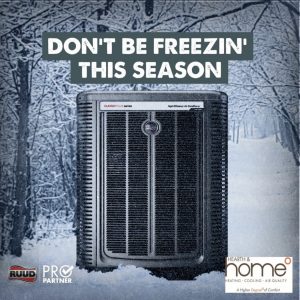The fact is that there are instances whereby the air conditioner won’t cool properly. When this happens we have to deal with the heat for most of the day. It is no fun when your AC is not cooling, but you must prepare for this situation. Imagine if this happens on the hottest day of the summer. Regardless of how many times you regulate the thermostat, you still discover that the AC is not cooling efficiently.
Air conditioning systems encompass several compartments. For instance, the typical split-system air conditioners feature several moving parts: copper tubing and thermostat, air filter, an evaporator coil, and an indoor air handler unit that connects the outdoor and indoor units. So, there are a couple of questions like “why is my AC system not cooling the house”? Just because your AC unit is not cooling doesn’t imply replacing the entire system or spending massive cash fixing the AC. Most homeowners can repair the system themselves. Nevertheless, there are instances whereby they need to contact a professional air conditioner service.

Why is the AC System not Blowing Cold Air?
From minimal tasks like a dirty filter or a thermostat set incorrectly to a more complicated situation that requires the replacement of components, there are several reasons why you may discover your air conditioner running without reducing the temperature in the house. Read on to find out some things you should consider before hiring a professional.
Thermostat Settings
When you experience heat in your home, the first thing is to check the thermostat settings. Ensure that you set it to cool. If you do this, check the temperature setting to ensure that someone hasn’t tampered with it. If the thermostat is switched off, set for a constant fan or set to heat, switch it back to cooling settings. After the system comes back on, wait for a short time, then check whether the cold air is circulating in the registers. If the system resets back to regular cooling operation, it implies that you have fixed the problem. If the reverse is the case, ensure that you check for other troubleshooting procedures.
Dirty Air Filter
Your AC system may feature an air filter integrated into the air handler unit. The problem is that the filter accumulates dust, dirt, and other contaminants as they enter the compartment. The filter works by cleaning the components integrated into the system, thereby making it operate more efficiently and resulting in a cleaner and healthier environment. A dirty air filter can reduce cooling and block airflow in your home. There are some cases whereby it shuts down the system completely. After checking your thermostat and can’t detect the faults, uninstall the filter and clean it thoroughly. If the problem persists, you have to consider other things to locate the problem.
Blocked Condenser Unit
The exterior of the condenser unit comes with a large outdoor coil which is wrapped around the outside of the system. The coil features a series of thin metal spaced very closely together. If your AC system is running but not reducing the temperatures inside, the problem could be attributed to a clogged or blocked condenser coil. When the system is operating correctly, the condenser air circulates air into the outdoor compartment via the condenser coil to help discharge heat energy from your home. Grass, dirt, and other contaminants can load up between the fins, thereby blocking the coil. A dirty coil can reduce energy efficiency, prevent the circulation of cool air from the AC registers, or ultimately damage the compressor and shut down the system. You can clean up the coil by vacuuming the coil or clearing away debris.
Damaged Heat Pump
A heat pump features different components inside that enable it to both heat and cool your home. It operates like an AC system’s condenser system in cooling operation and is subject to the same problems – compressor malfunctions, refrigerant leaks, frozen coil, clogged coil, etc. If your heat pump unit isn’t cooling, ensure that you check the thermostat settings, the condenser unit, the air filter etc.
Refrigerant Leak
Refrigerant is a substance that is essential for the cooling process. It circulates through the system’s outdoor and indoor coil and converts itself from liquid to gaseous substance, drawing humidity and heat energy from indoor air and discharging it outside. Based on its severity, a refrigerant leak can cause your AC system not to blow cold air; your system can operate for an expended period without efficiently cooling your home, and ultimately, it can cause a failed or damaged compressor and complete system failure.
Frozen Evaporator Coil
The indoor compartment of your central air conditioning unit usually features an evaporator coil. If your indoor system is a furnace, the evaporator coil is integrated into its cabinet positioned outside the system. If the indoor system is a fan coil, the evaporator coil is integrated into the fan coil cabinet. Warm indoor air circulates through the evaporator coil, where humidity and heat energy are discharged from the air. After that, cooler air is then released to your home. Signs of a clogged evaporator coil include; excessive condensate, higher utility bills, inadequate cooling, and frost accumulation on the copper refrigerant tubing. It is pretty difficult to access the evaporator coil; thus, hiring an HVAC professional is the best option to fix issues relating to a frozen evaporator coil.
Undersized Air Conditioner
AC systems are sized based on the amount of cooling they can deliver as measured in British Thermal Units per Hour (BTUh). The fact is that you may not notice any problems with an undersized AC unit under moderate temperature. Nevertheless, as temperature increases outside, your AC unit may run for an extended period and struggle to cool your home. Ensure that you check the size of your AC system from the rating details on the cabinet panel, but it will be hard to determine whether it will fit your home.
Conclusion
Peruse this post thoroughly to evaluate the strategies highlighted above. The reasons why your AC is not cooling are already stated in this article, coupled with the solutions. These seven tips will enable you to decide about your AC unit and the best way to handle the issues.





